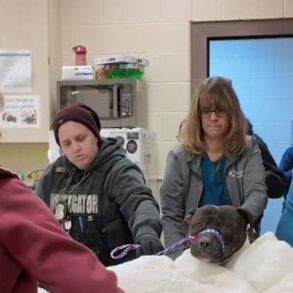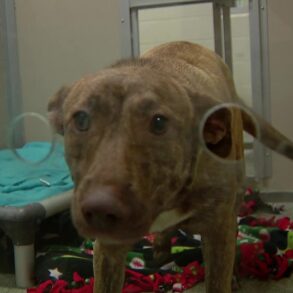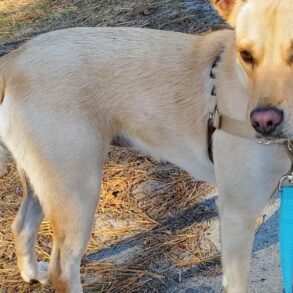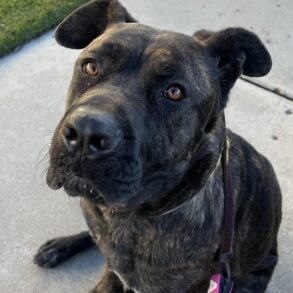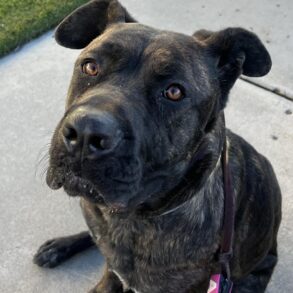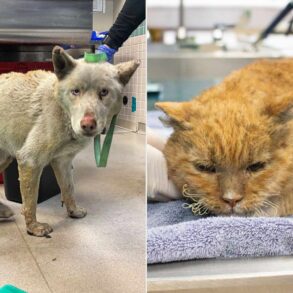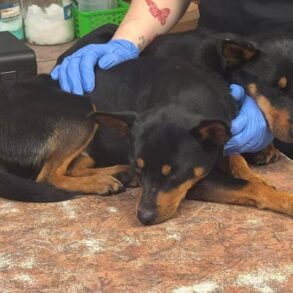Rosalind Smith is not a ‘dog person.’
“If I see a dog, I will scream, I will cry, and then I will run,” says the 48-year-old. “I scream like someone is attacking me with a knife! I don’t do it intentionally, because obviously it’s a mortifying and embarrassing thing to go through… but I am honestly that terrified.”
Videos by VICE
Smith—who lives in Hull, England—says this dog phobia has plagued her since childhood. “It really impacted my relationship with my dad,” she explains. “He’d blame me for ruining family outings and accuse me of being over-the-top with my behavior.” Instead of walking, she now spends hundreds of pounds on petrol every month to avoid running into dogs in person.
Toronto-based Sherry Bharucha still travels on foot, but completely swerves parks in the summer months, describing her fear of dogs as so visceral that it often leaves her “trapped” inside her apartment. Even dog content on social media can trigger the 50-year-old—although she finds rare solace as a member of the Facebook group ‘I hate DOGS and I’m NOT a horrible human being.’
“In a world that loves dogs so much, there’s so much shame in admitting you have a problem.”
Smith and Bharucha both had traumatic encounters with dogs as young children, leaving them with cynophobia, an anxiety disorder characterized by an overwhelming fear of canines.
It’s difficult to quantify exactly how many people suffer from cynophobia; given the prevalence of dogs, there’s surprisingly little academic research on the condition. However, an estimated 7 to 9 percent of Americans have some kind of phobia—and one study found that a fear of animals is one of the most common phobias worldwide. Of course, you’re far more likely to encounter a dog in your everyday life than you are a frog, a snake, or a bat.
“Walking through a public park is tough, because so many big dogs are let off the lead to roam around freely,” says Bharucha. “I can only leave the house to go to work after 9AM, as that’s past the peak dog-walking time. I’ve got so many friends I can’t visit any more, because most of them have pet dogs.”
A traumatic childhood experience is a common driver for the condition, but it can be brought on in various other ways; some inherit the behavior from people close to them, others might develop the phobia from reading about dog attacks. The symptoms can range from shortness of breath, all the way up to nausea, vomiting, and diarrhea.
“I liken one of my episodes to hyperventilating or having a panic attack,” says Bharucha. “My palms get sweaty, I start trembling, my throat gets dry, and I’m crying without any tears coming out. I can’t get my knees to stop shaking for at least 30 minutes after.”
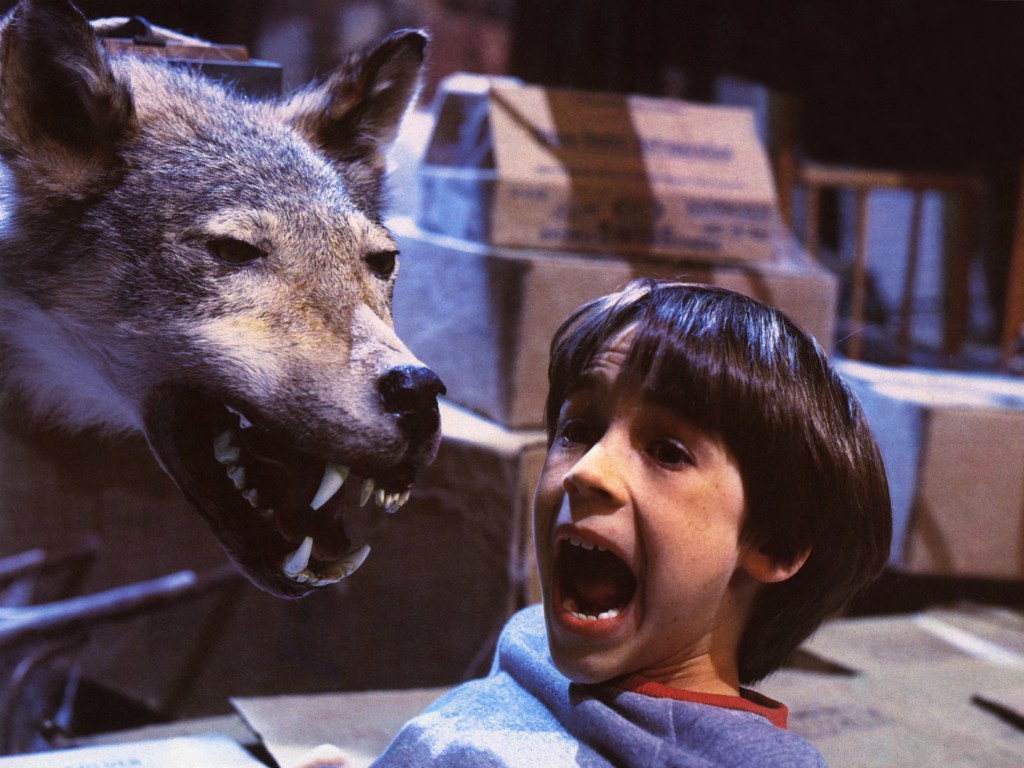
The latest numbers show that there are approximately 12 million dogs living in the UK, 78 million in the United States, and just under 8 million in Canada. “I spoke to the management of my apartment block and discovered there were 284 registered dogs in a building with 360 units,” says Bharucha. “Right now, dogs are just unavoidable!”
Dog ownership numbers surged during the COVID-19 pandemic. Since then, we’ve seen town councils unable to cope with the hefty uptick of dog shit; owners avoiding expensive vet fees due to the cost of living crisis; a record increase of dog attacks in England and Wales; and dogs becoming an increasingly inescapable part of our daily lives.
“I believe a lot of people are suffering in silence,” says Smith. “In a world that loves dogs so much, there’s so much shame in admitting you have a problem.”
“We must realize cynophobia can be fatal, as people will literally run into traffic to avoid a dog.”
I went on a ten-minute walk from my house to a local park, and counted 56 separate dogs, many of which weren’t on their leads. If I had an extreme phobia of clowns and saw 56 in the same timeframe, I’d be terrified to the point of collapse. This type of comparative thinking, cynophobia suffers say, can help outsiders empathize with their struggles.
“There’s a real lack of empathy,” says 50-year-old cynophobia sufferer Esther Makaya, from Maidenhead, a town west of London. “If I say to a dog owner, ‘Could you please put your dog on a lead, because I am scared?’ They will always say, ‘Why? He’s lovely!’ and won’t do anything. They treat you like you’re a bad person, while others can even be rude or abusive.”
“I feel gas-lit by the dog-friendly society,” says London-based cynophobia sufferer Anna Petermann. “Dogs are fiercely territorial animals and will always protect their people. However, I’m told by society to completely ignore my senses, and treat all dogs—including guard and fight dogs—as cute, non-threatening, and non-territorial creatures.”
Like every other cynophobe I spoke to, Petermann says that, when she’s told medical professionals about her condition, she’s been met with condescension and confusion, making it difficult to pursue a cure. With this in mind, she adds that cynophobia could benefit from a rebrand and even some kind of global public health campaign.
“If we erased cynophobia and had a name like, say, ‘dog sensitivity,’ it would be much broader and easier to understand,” she says.

So, who exactly can cynophobia sufferers turn to for sustained help? Roy Dyer is the founder of the Essex Dog Training Centre. He estimates he has organized more than 2,000 classes for cynophobia sufferers, which involve the afflicted gradually being introduced to friendly, trained dogs in a non-judgmental setting. With each class, the interactions become longer and longer. In 2011, he was visited by the now Queen Camilla, who praised his work, before he was later awarded with an MBE.
Dyer, who doesn’t charge any money for his classes, claims he has a 98 percent success rate in healing cynophobes—but admits he’s somewhat of an anomaly. “We’ve had people come from Australia and South Korea just for our classes. I keep being told we’re the only cynophobia treatment center in the world, which is depressing!” he says. “There’s a lot of desperate people out there with no one to turn to.”
Of some of the worst sufferers he’s ever encountered, Dyer says, “Some people will come in and vomit, even mess themselves. There was someone who couldn’t be near their mum’s fur coat because it reminded them of a dog. I knew one child that was so scared of their neighbor’s dog, they actually tried to hang themselves.
“We must realize cynophobia can be fatal, as people will literally run into traffic to avoid a dog. It’s a particularly grueling condition for autistic people as well.”

Dyer suggests there’s been a spike in cynophobia sufferers in recent years because of an increase in poorly trained dogs purchased during the pandemic. One study found that while many owners enjoyed more quality time with their dogs during the lockdowns, some noticed behavior issues—like aggression, fear, or overexcitement—after everything opened back up.
For cynophobia suffers, this has created a terrifying new reality.
“Dog owners need to be aware that this phobia is very real,” says Dyer. “When sufferers see your dog off its lead, their stomach churns and their heart beats out of their chest. Put yourself in their position; could you deal with it?”
For exhausted sufferers like Rosalind Smith, there’s a feeling that society sees them more as a joke than people worth helping; that we’ve reached a place where people empathize more with dogs than people.
“I’ve had tapping therapy, cognitive behavioral therapy, and neurolinguistic programming to heal my cynophobia, but none of it worked. I’ve literally tried everything!” she says. “This is a very destabilizing condition and there needs to be more understanding. Cynophobia sufferers are tired of being treated like annoying children.”
Follow Thomas Hobbs on X @thobbsjourno
This post was originally published on this site be sure to check out more of their content.
















